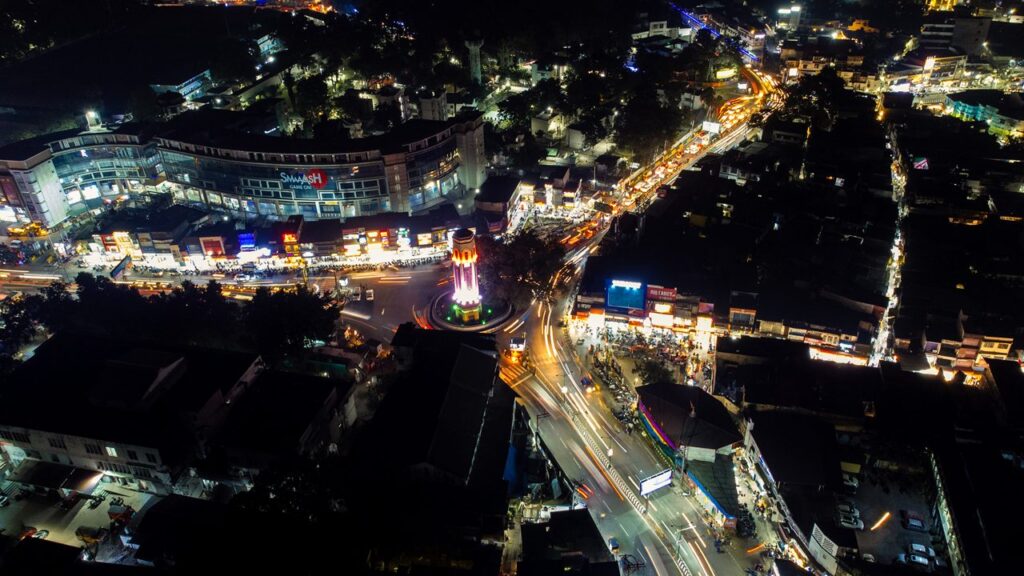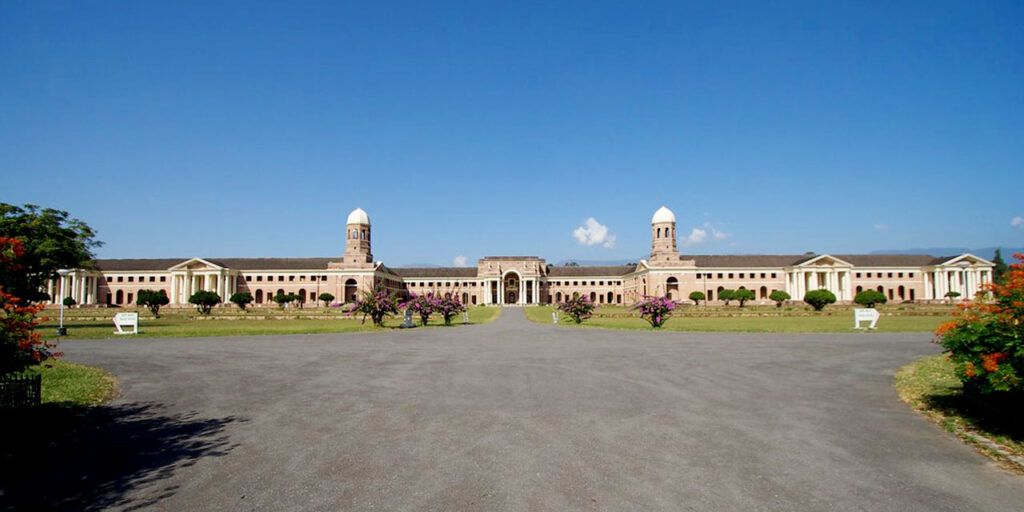Table of Contents
Dehradun, the capital city of Uttarakhand, nestled in the foothills of the Himalayas, is not just a scenic destination but also a significant urban hub in northern India. The Demographics of Dehradun paint a fascinating picture of a city that blends tradition with modernity, ethnic diversity with cultural harmony, and rural roots with urban growth. This detailed blog explores the Demographics of Dehradun based on the latest available data, particularly the 2011 Census of India.

Population Structure: A Growing Urban Center
As per the 2011 Census of India, the Demographics of Dehradun reveal a total city population of 578,420. Among them, the male population stands at 303,411, while the female population is 275,009. This data underscores a gender imbalance, reflected in the sex ratio.
The sex ratio of Dehradun is 907 females per 1,000 males, which is slightly below the national average of 943. A more alarming concern emerges in the child sex ratio (ages 0–6), which is 873 girls per 1,000 boys, indicating a declining trend that demands socio-cultural introspection and policy intervention.

The child population of Dehradun (age group 0-6 years) further adds to the Demographics of Dehradun. There are approximately 50,600 boys and 28,580 girls, which again reflects the disparity in gender ratio from an early age.
Literacy Rate: A Well-Educated Urban Cluster
One of the most impressive aspects of the Demographics of Dehradun is its high literacy rate. Dehradun boasts a literacy rate of 89.32%, which is significantly higher than the national average of 74.04%. This positions Dehradun among the top literate cities in India.
- Male Literacy Rate: 92.65%
- Female Literacy Rate: 85.66%
This disparity, though narrower than many regions, still shows the gap in gender-based access to education. The total number of literates in Dehradun city is 463,791, comprising 251,832 literate males and 211,959 literate females. These figures highlight the city’s focus on educational development, which plays a crucial role in shaping the broader Demographics of Dehradun.
Slum Population and Outgrowth Areas
A vital component in understanding the Demographics of Dehradun is assessing the slum and marginalized populations. According to the 2011 Census, the slum population, along with its outgrowth areas, includes 32,861 dwellings, accommodating a massive 248,134 individuals. This forms around 27.58% of the total population of Dehradun city and its adjoining outgrowths, which altogether account for a population of 574,840.
This portion of the Demographics of Dehradun points towards the stark urban divide. While the city thrives as an educational and IT hub, a large part of its population still resides in sub-standard housing with limited access to basic services. Understanding this urban-rural divide is essential in addressing the city’s developmental priorities.
Ethnic and Linguistic Composition
The Demographics of Dehradun reveal a culturally vibrant and linguistically diverse society. Hindi is the official language and the most commonly spoken tongue in the city. However, the true richness lies in its regional dialects and multilingual population.
Commonly Spoken Languages:
- Hindi (official and widely spoken)
- Garhwali
- Jaunsari
- Kumaoni
- Punjabi
- Nepali
- Bengali
- Tibeto-Burman languages

These dialects and languages represent the melting pot of cultures that form the Demographics of Dehradun. Migrants from neighboring hill regions, the Terai belt, and even international borders have made Dehradun their home over the decades.
Religious Composition
When we explore the Demographics of Dehradun, religion emerges as another crucial aspect. The city, like the rest of India, is predominantly Hindu, but it also reflects significant religious diversity.

Religion-Wise Distribution:
- Hinduism: 82.53%
- Islam: 11.75%
- Sikhism: 3.5%
- Christianity: 1.06%
- Jainism: 0.63%
- Buddhism: 0.29%
- Others: 0.01%
- No Religion Specified: 0.24%
This religious structure shows that the Demographics of Dehradun are not only about numbers but also about spiritual and cultural coexistence. The religious pluralism of Dehradun is reflected in its festivals, daily life, and community interactions.
The Native Identity: Who Are the People of Dehradun?
The original inhabitants of Dehradun are known as Uttarakhandis. They include Garhwalis, Kumaonis, and Jaunsaris — ethnic groups with rich histories, unique traditions, and indigenous languages. These communities form the core of the Demographics of Dehradun, especially in the city’s rural outskirts and traditional neighborhoods.
However, due to its growing economic importance and educational infrastructure, Dehradun has attracted people from all across India. This influx of migrants, students, professionals, and entrepreneurs has transformed the city’s social structure and diversified the Demographics of Dehradun.
Urbanization and Migration Patterns
Dehradun has experienced rapid urbanization over the past two decades. From being a quaint town known for its boarding schools and military institutions, it has now emerged as a bustling capital city with rising real estate, expanding infrastructure, and IT development.
This shift is central to the changing Demographics of Dehradun. Migration, especially from rural Uttarakhand and other north Indian states like Uttar Pradesh, Bihar, and West Bengal, has altered the urban character of the city. The result is a multi-ethnic, multi-lingual population base, especially among the working-age group (15-45 years), which is now the dominant demographic cluster.
Gender Distribution and Employment
The gender-based breakdown within the Demographics of Dehradun offers interesting insights into the employment structure and social roles. While males outnumber females, both genders are actively contributing to the economy — from agriculture and government services to IT, education, and retail.
However, women’s representation in formal employment still lags behind. Despite high female literacy, societal norms and lack of workplace infrastructure hinder full participation. These gender disparities in employment and income are important when analyzing the socio-economic Demographics of Dehradun.
Age Distribution: A Youth-Driven Population
The Demographics of Dehradun are youth-centric. A significant portion of the population is below 35 years of age, primarily due to the presence of numerous educational institutions, coaching centers, and employment opportunities. This young demographic adds dynamism to the city but also creates pressure on housing, transportation, and urban services.
The younger population not only boosts the local economy but also contributes to cultural and technological advancements in the region. It has also led to a boom in local businesses, cafes, startups, and educational services.
Literacy and Education Infrastructure
Education is central to the identity and Demographics of Dehradun. The city is home to some of India’s finest schools and universities, including:
- Doon School
- Welham Girls’ and Boys’ Schools
- Forest Research Institute (FRI)
- Indian Military Academy (IMA)
- University of Petroleum and Energy Studies (UPES)
- Graphic Era University
- DIT University

These institutions not only educate but also attract a diverse student population, further diversifying the Demographics of Dehradun and enriching its cosmopolitan nature.
Future Demographic Trends
While the most recent detailed census data is from 2011, projections indicate that the Demographics of Dehradun have continued to evolve. Key anticipated trends include:
- Continued population growth due to urban migration
- Increasing female literacy and employment
- Better child sex ratio due to awareness programs
- Rising middle-class and educated population
- Growth in migrant populations from other Indian states
Urban planning and governance in the coming years will play a critical role in shaping these demographic trends, ensuring that development is inclusive and sustainable.
Conclusion: Why the Demographics of Dehradun Matter
Understanding the Demographics of Dehradun is not just an academic exercise but a key to planning its future. From housing and infrastructure to education, healthcare, and employment — every aspect of urban development must align with the demographic realities.
Dehradun, with its high literacy, young population, and cultural diversity, holds the potential to become a model city for sustainable growth. However, challenges such as gender disparity, slum population, and uneven access to resources must be addressed proactively.
By keeping a close eye on the evolving Demographics of Dehradun, policymakers, researchers, and residents can work together to build a city that is inclusive, prosperous, and culturally rich.
Frequently Asked Questions (FAQs) About the Demographics of Dehradun
1. What is the total population of Dehradun according to the latest census?
According to the 2011 Census of India, the Demographics of Dehradun show a total city population of 578,420, with 303,411 males and 275,009 females. Including its outgrowth areas, the population reaches 574,840.
2. What is the sex ratio in Dehradun?
The overall sex ratio in Dehradun is 907 females per 1,000 males. The child sex ratio (ages 0–6) is even lower, at 873 girls per 1,000 boys, reflecting a gender imbalance that needs addressing.
3. How many children are there in Dehradun?
The child population (aged 0–6 years) in Dehradun city comprises 50,600 boys and 28,580 girls, playing a significant role in shaping the future Demographics of Dehradun.
4. What is the literacy rate in Dehradun?
The city boasts an impressive literacy rate of 89.32%. Male literacy stands at 92.65%, while female literacy is 85.66%, contributing to Dehradun’s image as an educational hub.
5. Which languages are spoken in Dehradun?
The Demographics of Dehradun include speakers of various languages. Hindi is the most widely spoken and official language. Regional dialects include Garhwali, Kumaoni, Jaunsari, as well as Punjabi, Nepali, Bengali, and some Tibeto-Burman languages.
6. What is the religious composition of Dehradun?
As per 2011 data:
- Hindus: 82.53%
- Muslims: 11.75%
- Sikhs: 3.5%
- Christians: 1.06%
- Jains: 0.63%
- Buddhists: 0.29%
- Others and No Religion: Minor percentages
These figures highlight the religious diversity within the Demographics of Dehradun.
7. What percentage of Dehradun’s population lives in slums?
Approximately 27.58% of the total population of Dehradun city and its outgrowth areas reside in slum settlements, equating to about 248,134 people, according to the 2011 Census.
8. How is Dehradun’s population changing due to urbanization?
The Demographics of Dehradun are evolving rapidly due to migration, urban development, and expansion of educational institutions. The city is seeing an influx of students, professionals, and labor migrants, especially from Uttar Pradesh, Bihar, and rural Uttarakhand.
9. Who are the native people of Dehradun?
The native communities of Dehradun are known as Uttarakhandis, primarily including Garhwali, Kumaoni, and Jaunsari ethnic groups. These groups form the cultural backbone of the Demographics of Dehradun.
10. Why are the Demographics of Dehradun important?
Understanding the Demographics of Dehradun helps policymakers, urban planners, and researchers make informed decisions about infrastructure, education, healthcare, housing, and employment. It also helps businesses and NGOs target services where they’re needed most.



[…] Hindi is the widely spoken language, Garhwali and Kumaoni dialects represent the essence of the Culture of Dehradun. English is also […]